It’s Friday night at Trails Gentlemen’s Club in Salt Lake City. Typically, this would be one of the busiest weekends for residents of Utah’s largest city to be patronizing local entertainment venues and establishments. Historically speaking, May 1 marks the unofficial end of winter while the scorching desert summer nights remain at least a month away.
Yet this Friday night also marks another important milestone. On May 1, the state of Utah, Salt Lake County, and Salt Lake City all lifted many of their pandemic restrictions in the same arbitrary and haphazard manner that they implemented them. Since many of the area’s adult entertainment establishments are classified as bars under state law, Salt Lake County became one of the first regions in the country to explicitly allow its collective half dozen strip clubs to open.
VICE visited three Utah strip clubs in their first week of reopening to get a sense of what the new normal looks like.
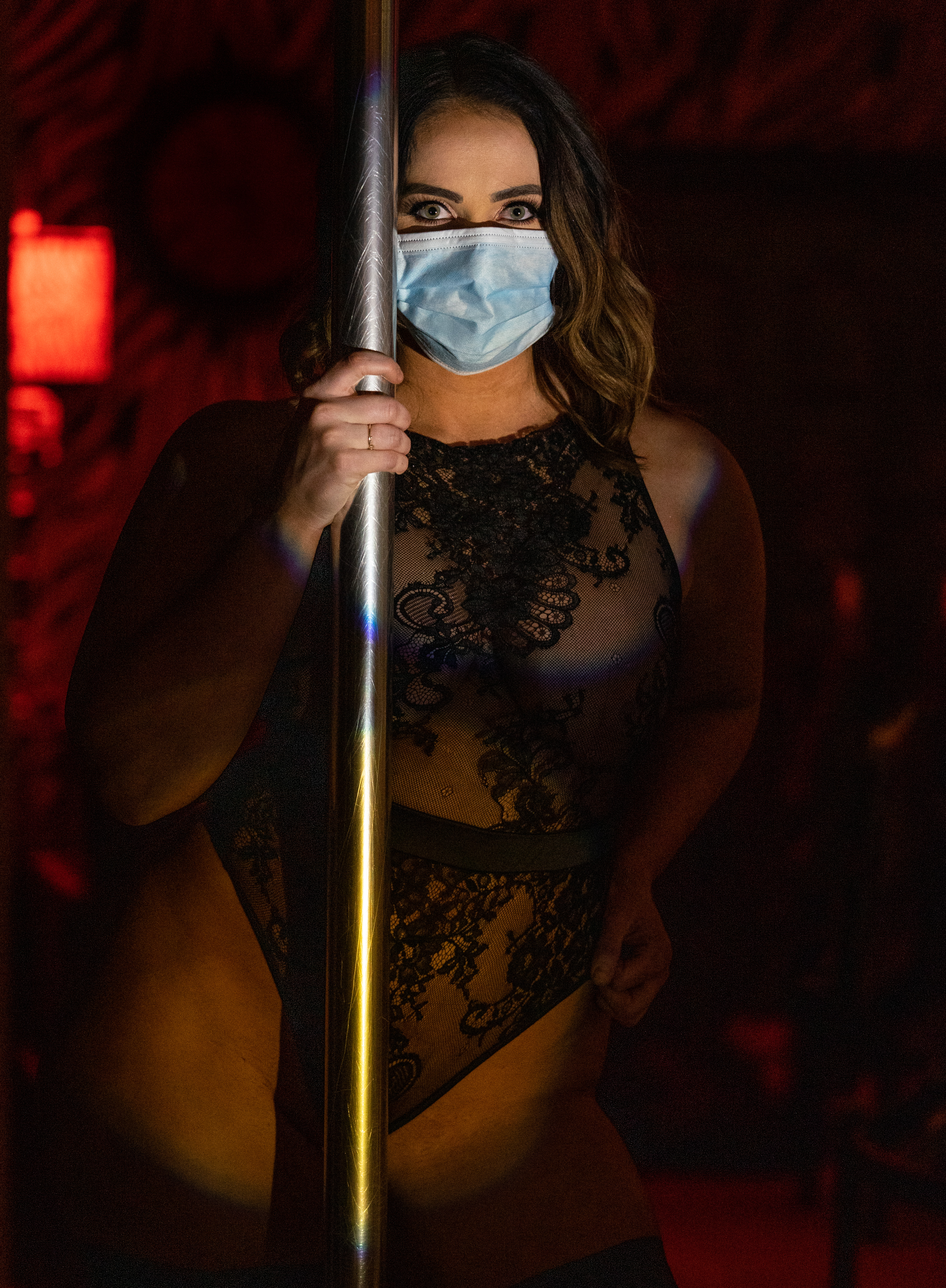
It’s 9:20 p.m. and the sun has just sunk below the horizon on the western slope of the Sierra Nevada mountains. The parking lot of Trails is full and a line is starting to queue outside. From the outside, the venue looks like any other popular hip-hop club, with a DJ playing Drake, Future, Tyga, Post Malone, Blueface, and Rihanna.
Groups of ethnically diverse patrons aren’t standing in line but rather in clumps, strategically placed six feet away from other groups. And while venues such as Trails used to have strict dress codes regarding hats and facial coverings, everyone in line has their face covered. Some wear medical grade N95 masks. Some wear makeshift Western-style bandanas. A large majority wear high-end ski balaclavas, a subtle nod to a ski season that was abruptly cut short due to the pandemic.
A bouncer in an N95 mask pulls double duty, checking IDs before taking temperatures. (Those with temperatures above 99 are denied entry.) Once all members of a group pass the temperature scan, the group is escorted to a table as the bouncer recites the rules of the new world:
-
Stay six feet apart from dancers, employees, and other patrons
-
Your mask must remain on at all times except when you are drinking
-
Do not come within six feet of the stage other than to place your money around the edge
-
Once you have placed your money on the edge of the stage, you must immediately return to your seat
For strip clubs in Salt Lake County, the crisis hit hard and fast, just as it did with many small businesses, but with one major caveat: strip clubs (as well as casinos) were not eligible for small business loans, a practice that many in the industry decried as unfair.
An employee at Southern X-posure, another Salt Lake City strip club, points out that the club, like others in the area, was ineligible to receive assistance despite paying federal, state, and local taxes, as well as other fees such as a liquor license–and despite the fact that business had come to a screeching halt before they were officially forced to shut their doors.
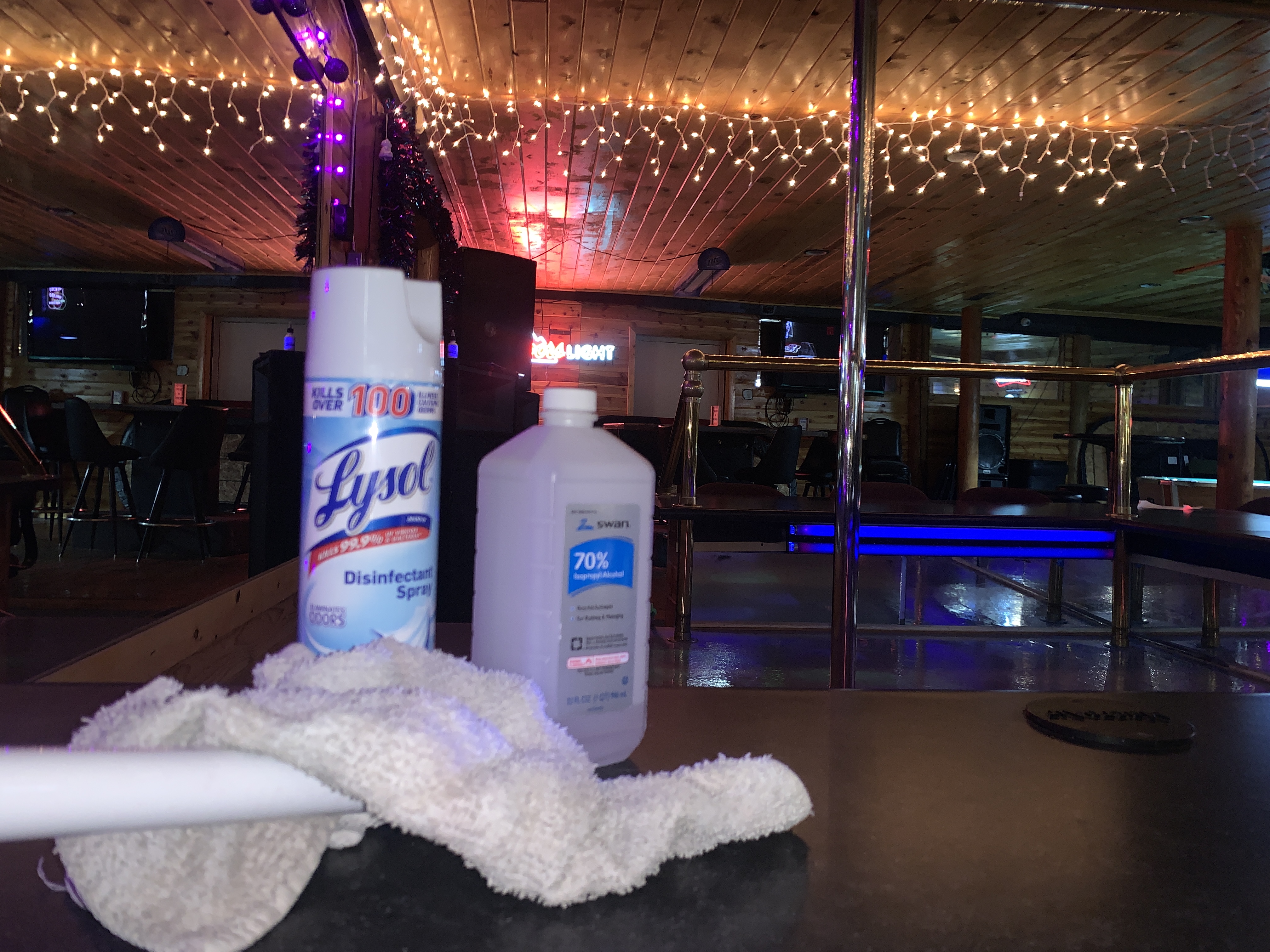
“We didn’t have much business the last two weeks before the shutdown because they [the government] was telling everyone to stay home,” she says.
Inside Trails, the LED lights surrounding the stage shine extra bright due to the absence of patrons sitting around the “tip rail” (the counter immediately next to the stage). At the end of each performance, a masked employee dutifully uses a Swiffer to remove the dollar bills from the stage (where they will then be counted and handled by a separate gloved employee) while another sterilizes the performing area in preparation for the next masked dancer.
All dancers, despite being at least six feet from patrons, are required to wear face marks.
There is a poetic irony as the callipygous, surgically perfected women danced to Future’s hit song “Mask Off” as the DJ periodically reminded patrons to keep apart and wash their hands.
Adapting to these new measures was the only shot many of the women had for gainful employment as Utah’s unemployment numbers continue to skyrocket and a federal independent contractor assistance program is still in the process of being cobbled together.
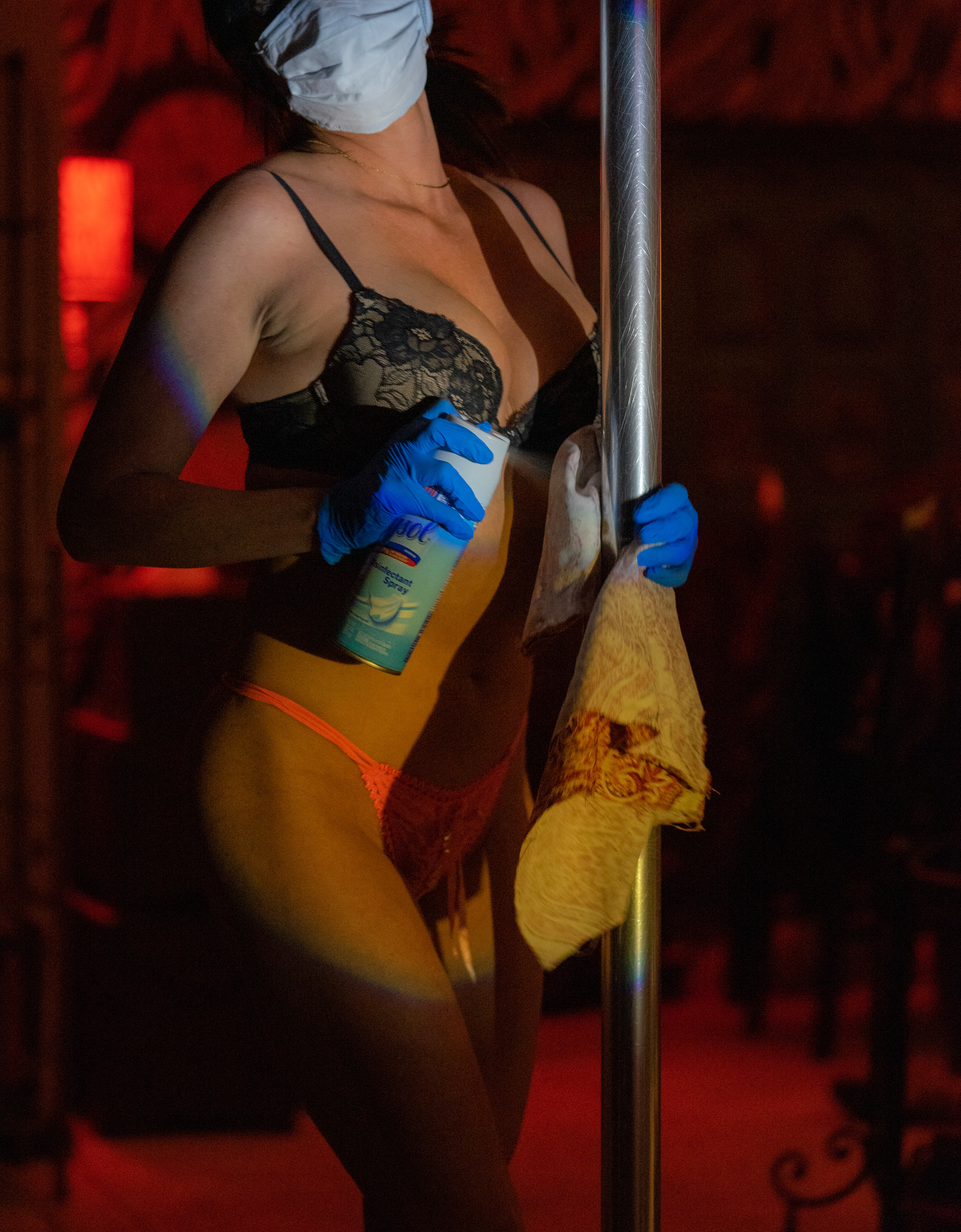
The performers, despite being unemployed for almost two months, were ineligible to receive unemployment benefits due to their independent contractor status. “The pandemic hit everyone so suddenly,” says Steph Mercedes, dancer manager at Trails. “However, most people who lost their jobs were able to apply for unemployment benefits, which is something that we could not do being independent contractors, so the financial stress was extreme.”
Ten miles away from the glittering lights of downtown Salt Lake City, The Bears Den in Magna also opened its doors. In a squat, unassuming building in the middle of Utah’s desolate landscape, the venue largely caters to the blue collar workers at the nearby Rio Tinto Kennecott copper mine.
“The Den,” as locals affectionately call it, is currently the only bar in operation in the city of Magna as the others were deemed structurally unsound following a series of earthquakes that ravaged the region in March and April.
There’s no Vegas-style DJ or flashy LED lights at the Den, but rather wood grain-paneled walls and strings of Christmas lights. The Den is not located in Salt Lake City limits, so the rules are different here. Dancers must still wear masks and are not allowed to touch the cash, but patrons do not have to wear masks.
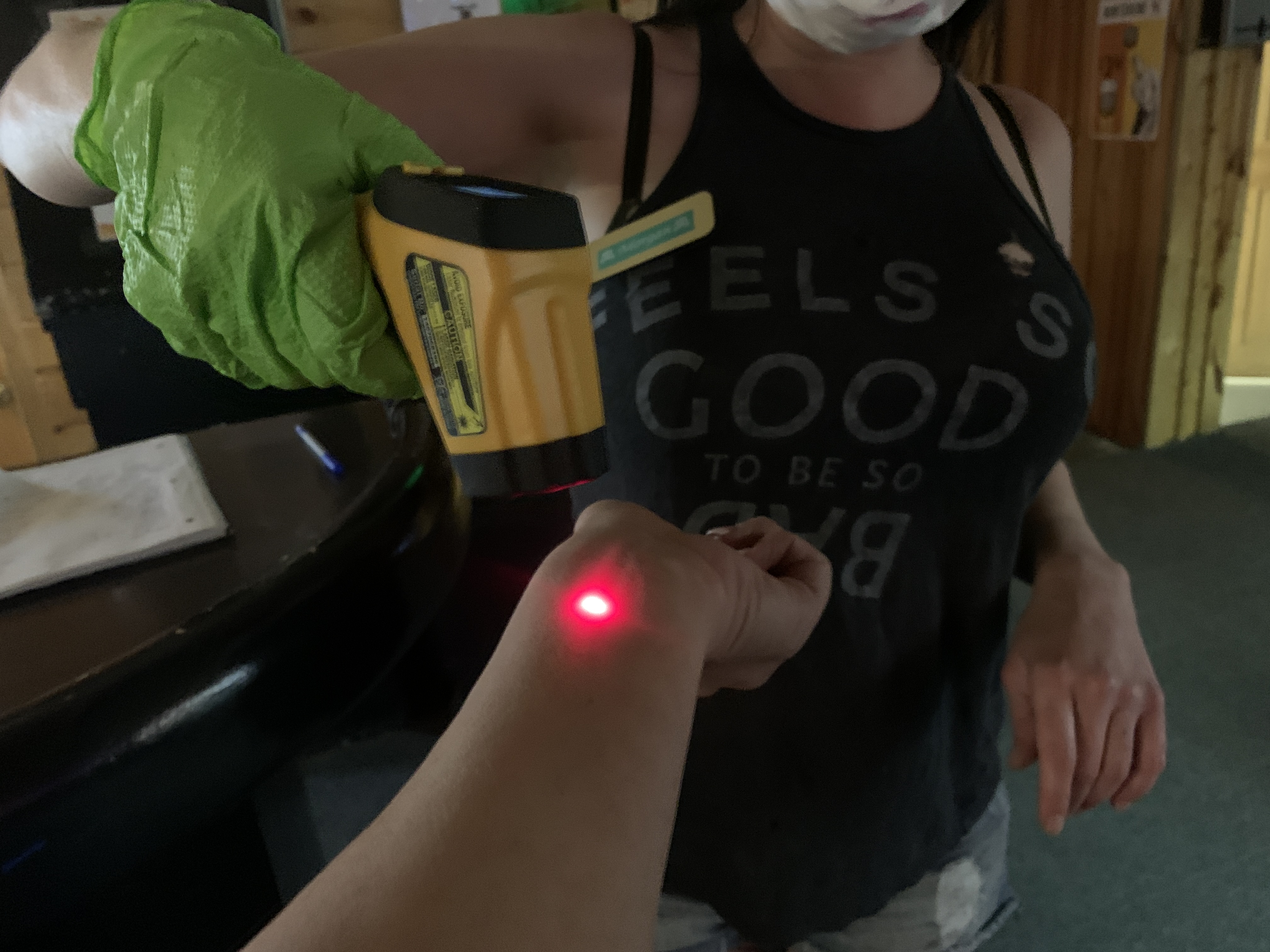
The bouncer, however, like the one at Trails, has still assumed a new role. He dutifully records names and phone numbers of everyone who comes in.
“In case of an outbreak,” he explains, his voice muffled behind his paper medical mask, which is clearly too tight on him.
As the sole dancer, a pale thin woman with grown-out blonde highlights, performs on the bar’s small stage to a series of country songs and 80’s classic rock, a bartender makes drinks behind a plexiglass partition, obediently changing her gloves between rounds of drinks.
The crowd, clad in camo patterns, cowboy boots, and Harley Davidson-branded wear, shift their gaze between the performer and the TVs behind the bar, which broadcast a NASCAR race and Fox News. Two patrons proudly show me their Punisher-branded facial masks while another flaunted his N95.
Morgan, the bartender, estimates that the club is about 60 percent fuller than usual, a similar approximation provided by staff at Trails.
“People have money to spend. They just got their stimulus checks and they think that they’re getting ready to go back to work,” she says as she wipes down a pool stick before giving it to a new group of players.
For David, a 50-something auto mechanic and regular at The Den, returning to the bar means not just returning to a sense of normalcy, but also supporting a local small business that he says is important to the community.
“I’m not scared of getting sick,” he says as he pulls out a stack of dollar bills to pay the masked performer as she sprays a copious amount of sanitizer on the stage between Luke Bryan songs.
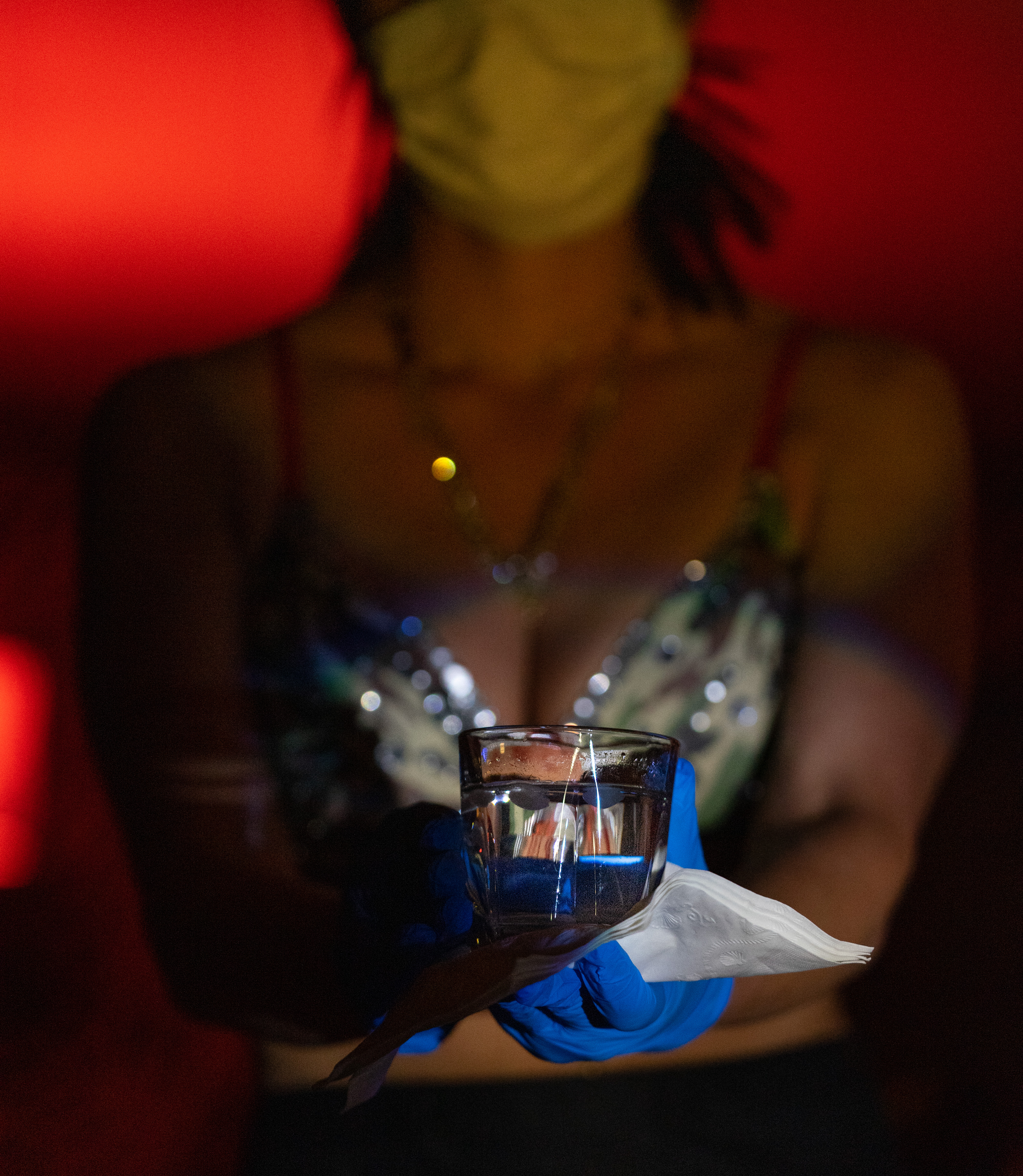
“I’m not that old, and I might as well get it over with. If it’s going to happen, let it happen. But I’m being safe. I’m washing my hands. I’m doing this social distancing,” he says as he gestured to the appropriately spaced tables.
“But people need to make money. The government didn’t help us, so we have to help each other.”
While all three clubs' attendance numbers seem to be up, many of the dancers say they have noticed a significant drop in their tips.
“Talking to customers when we are off stage is really a vital part of job,” says Steph Martines, the dancer manager. “Since we don’t do lap dances, talking to customers is really where customers feel important in our club.”
A woman who gives her name as Sass, who has been a dancer at The Den for more than a decade, is glad that she doesn’t have to wear a mask when she speaks to me. Her brown hair is cut to a sensible shoulder length and her short nails are manicured and unchipped. Despite her no-nonsense appearance, she lights up the room as she speaks, periodically pausing to wave to patrons who haven’t seen her in over six weeks.
She claims that despite the increase in attendance and overall revenue, she has only made about 60 percent of what she normally makes in a good day—a decrease that she attributes to the face mask requirement.
“The money is different when they can’t see you smiling,” she explains as she counts out her earnings from her earlier day shift at the club.
For the clubs and the dancers, the future remains as murky as it does for many Americans.
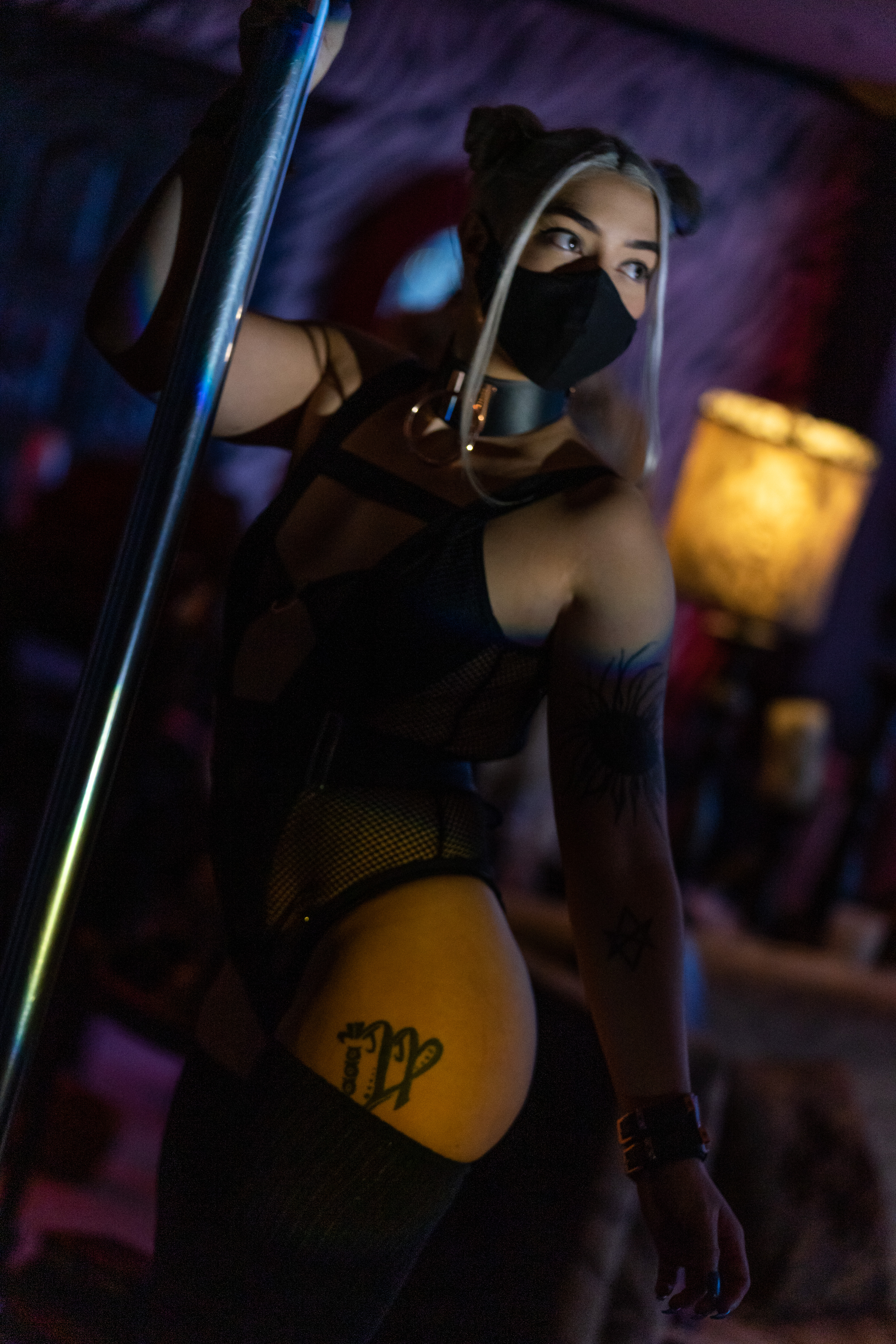
Olivia, a dancer at The Den, stresses that she enjoys her work, but is also working on a back-up plan and plans to go to school again to work on her phlebotomy certification.
Martines emphasizes the importance of business and having a savings account and building it up as much as possible, a sentiment echoed by Sass.
“Invest in yourself,” she tells me with the enthusiasm and experience of a mother who has spent years giving pep talks to her children.
Sass is already investing in herself. She is currently working on obtaining her B100 contractor’s license, a construction license which will allow her to work on any above-ground structure.
“Everyone still builds, even during the pandemic, and there aren’t many women contractors,” she says, noting that she hopes her gender might lead her to a better chance at getting a bid on a project.
While Olivia concurs with the idea of saving, she also urges others to support their local small businesses in their communities by “coming in, tipping, and having a good time.”
She asks if I can ask the state and federal government to not shut down her livelihood again. Before I can respond, she interjects with another thought.
“But making sure that people take the necessary precautions to stop the spread of the disease is important. So I hope the precautions have worked and keep working,” she adds.
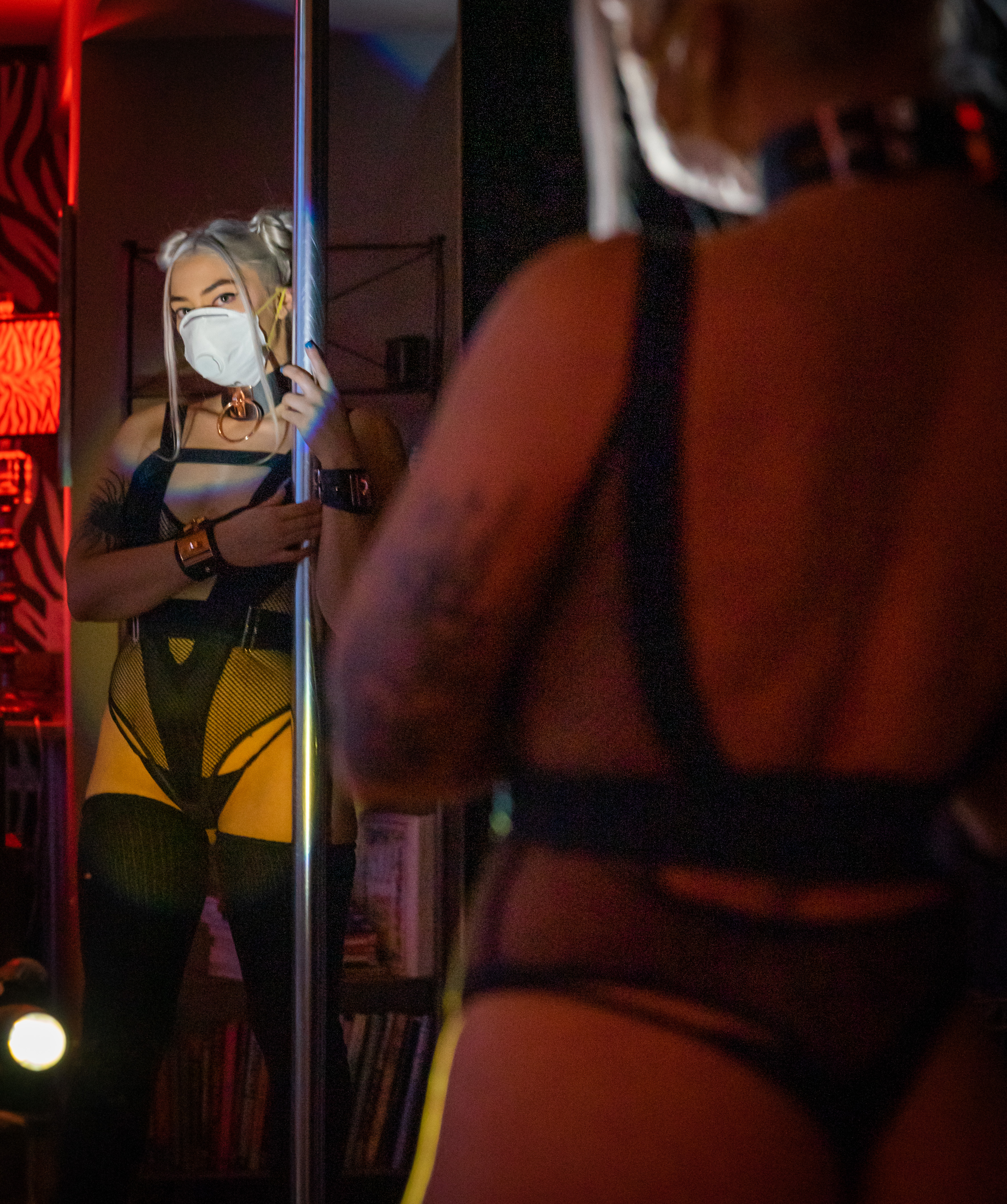
For now, club owners and employees appear to be navigating the new world order while also maintaining a precarious balance between playing party host and health code enforcer. Everyone I speak to stresses the importance of remaining vigilant and doing their part to stop the spread of the virus.
At Trails, a burly bouncer walks over and gently reminds two women not to stray too far from their table, slightly dampening the typical conviviality that accompanies the establishment on any given Friday night in mid-spring.
And just as one patron is about to show me yet another action-hero inspired face covering, a fight breaks out in the parking lot of the bar, causing several people to forgo their social distance—and suggesting that even the most carefully maintained precautions sometimes fail.
from VICE https://ift.tt/2WT5wYR
via cheap web hosting
No comments:
Post a Comment